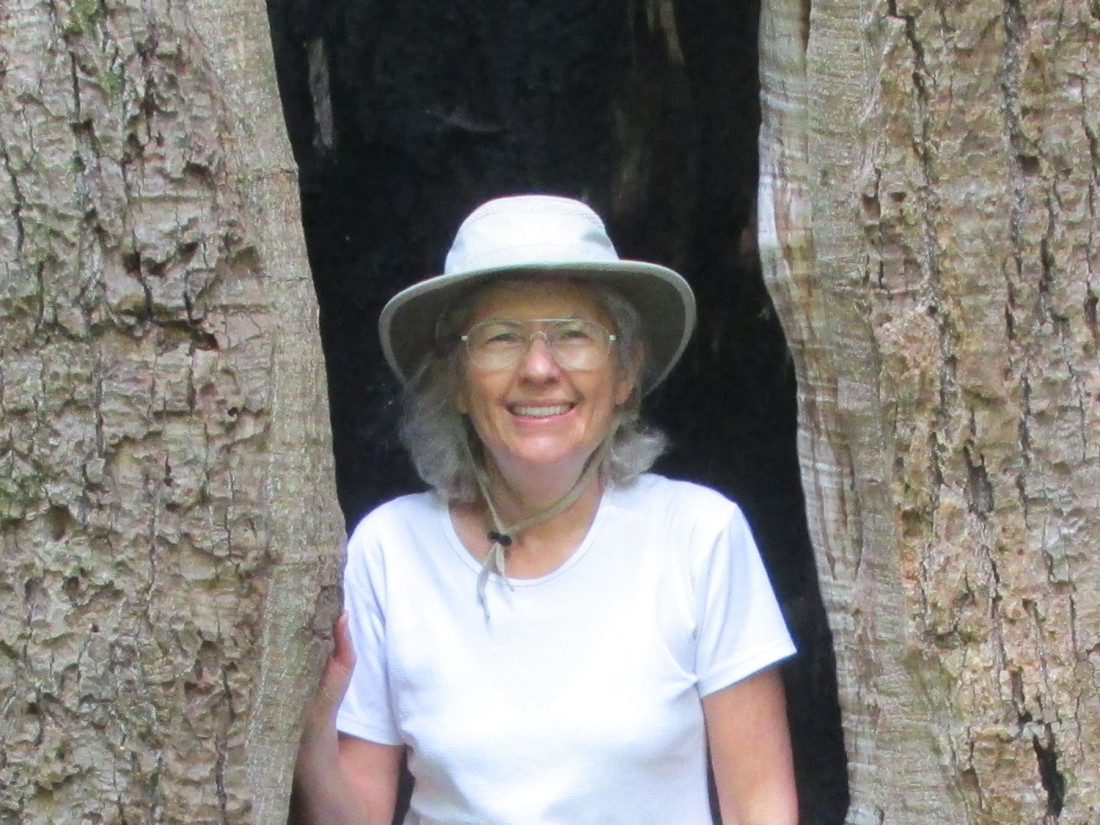What do the South’s 71 national park units have in common? Asheville author Danny Bernstein, who visited every one of them in preparation for the National Park Service’s centennial year, says that’s a hard question to answer.
Some parks, like the 1-acre Brices Cross Roads and Tupelo national battlefields in Tupelo, Miss., are modest in size. Others, like the Great Smoky Mountains National Park west of Asheville, are vast. Congaree National Park, outside Columbia, S.C., preserves a unique natural environment. The New Orleans Jazz National Historical Park commemorates an important cultural milestone. Many others have historical importance.
Perhaps the greatest commonality Bernstein found among all the different parks she visited for her new book, Forests Alligators Battlefields: My Journey through the National Parks of the South, was that each can claim a particular significance. In her view, every one of the South’s 71 parks proved itself “worthy of protection” and interesting in its own way.
Beginning around 2010, Bernstein plotted an itinerary to visit and revisit a dizzying variety of sites, using the federal agency’s definition of the South: bounded to the north by Kentucky, to the south by the U.S. Virgin Islands, to the east by the Atlantic Ocean and to the west by Louisiana.
She urges her fellow Ashevilleans to look beyond the riches to be found in the Smokies and our other local national park units, which include the Blue Ridge Ridge Parkway, the Appalachian National Scenic Trail and the Carl Sandburg Home. Just a three-hour drive from Asheville, she explains, awaits the Congaree’s strange flood plain, with its massive old-growth bald cypress and loblolly pines and outstanding bird-watching opportunities. Visitors can canoe on Cedar Creek or stroll the park’s 2.4-mile boardwalk. Rustic camping facilities are available, but early arrival is advisable, since spots can’t be reserved.
Among the more exotic locales Bernstein visited were properties in the U.S.Virgin Islands. She found the campground at Cinnamon Bay on the island of St. John “a paradise of a place.” The three parks on St. Croix, on the other hand, “could use a lot of help and a friends-of-the-park group.” Besides understaffed visitors centers and faded signage, though, there was some fascinating history.
Unlike Bernstein’s three previous books, this one is not about hiking, though she writes about many interesting walks along the way. It’s also not a guidebook. “We don’t need that, now that we can look up the park websites,” she explains. Instead, “I talk about what I found and my idea of why it was protected.”
No less important than each park’s physical resources, Bernstein realized, is the human element: the rangers and volunteers who make the system work and make the different sites come alive. “They are so steeped in the park,” she says, “and so eager to share that passion with visitors.” She was astonished at how quickly rangers returned emails and phone calls. She also shares a tip: Get to the park early. “If there are three or four visitors who need to know where the bathroom is,” she explains, the ranger won’t be able to engage with your questions as fully. But when you have their undivided attention, rangers and volunteers almost always share interesting information and insights.
In low-lying parks, Bernstein observed sobering evidence of the threat posed by climate change. At the Everglades National Park’s Flamingo Visitor Center, for example, signs indicate the area’s elevation: 3 feet above sea level. And at the Jean Lafitte National Historical Park and Preserve in Louisiana’s bayou country, ranger Aleutia Scott told Bernstein candidly, “Besides all the levees, the sea level is also rising: Our wetlands are being lost.”
When asked what’s next for her, Bernstein doesn’t talk about a trip, a long hike or a new book project. Instead, she’s embarking on a book tour that will take her “all across the Southeast” to talk to hiking groups, book groups, environmental organizations and schools. “Whoever invites me, I will go and talk about the National Park Service,” she explains.
Ultimately, Bernstein hopes to inspire an appreciation of all our national parks. “The National Park Service is so much more than the big, iconic national parks,” she emphasizes. And though she’s been volunteering in the Smokies since 2010 and leads hikes there every month, she also encourages folks to visit the many smaller parks.
“We have 410 National Park Service units in this country, and every one of them is protecting something useful and important,” she maintains. “If they didn’t do this work, no one would, and the land would be sold off. If Carl Sandburg’s wife hadn’t sold her land to the parks, the Sandburg house would be a subdivision now. It wouldn’t be a place where people can walk and jog and visit goats and learn about the Sandburgs’ way of life. So let’s not forget these smaller parks.”




Before you comment
The comments section is here to provide a platform for civil dialogue on the issues we face together as a local community. Xpress is committed to offering this platform for all voices, but when the tone of the discussion gets nasty or strays off topic, we believe many people choose not to participate. Xpress editors are determined to moderate comments to ensure a constructive interchange is maintained. All comments judged not to be in keeping with the spirit of civil discourse will be removed and repeat violators will be banned. See here for our terms of service. Thank you for being part of this effort to promote respectful discussion.